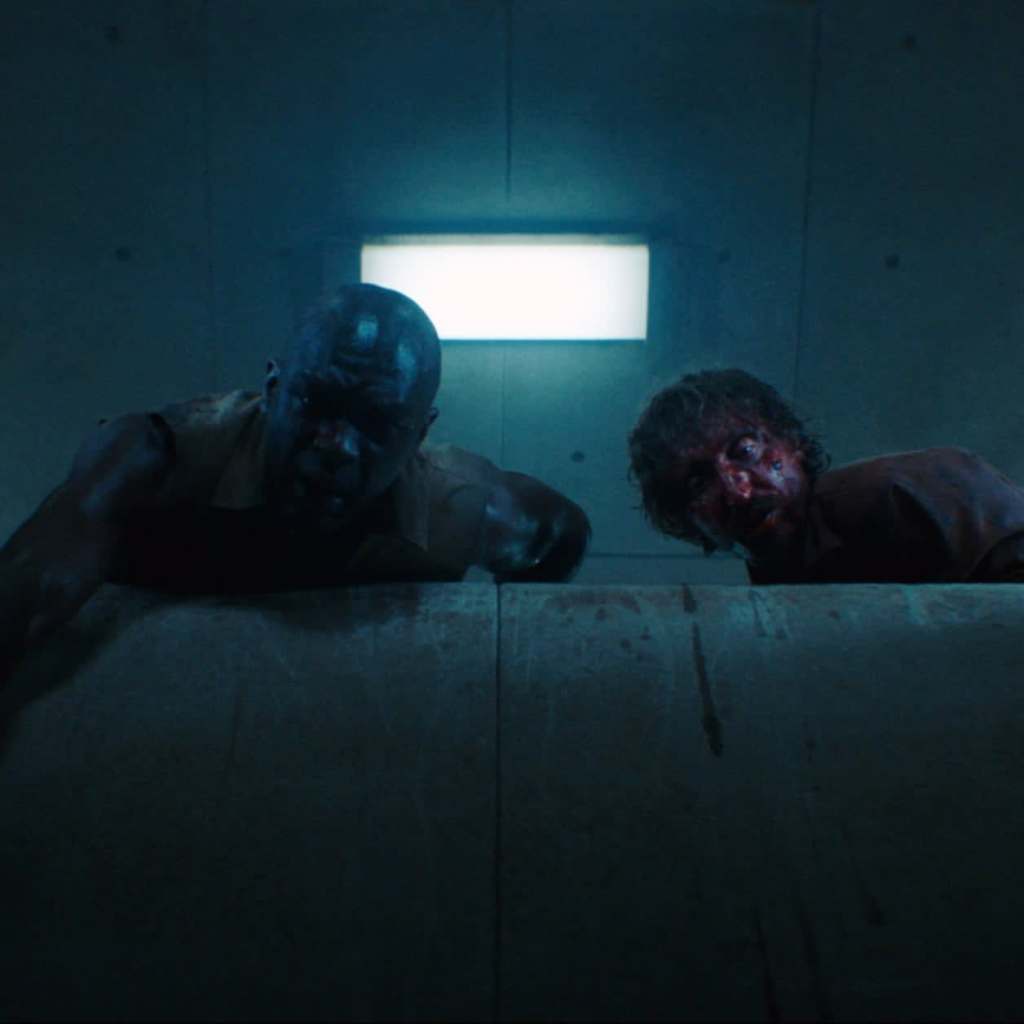Watching The Platform on Netflix might just fill the Parasite-shaped hole in your heart, especially as you seek a smart distraction these days. Galder Gaztelu-Urrutia’s gritty Spanish social thriller invites us into a facility where a food spread on a platform descends a tower. Cellmates at the top get first dibs on the menu while those below sustain on their scraps. The film is a mind twister for sure, especially towards its wildly metaphorical conclusion. Here’s a breakdown of Goreng’s revolution in The Platform‘s ending, no panna cotta guaranteed.
The Platform’s Premise
Much like Parasite, the visual hierarchy of capitalism is obvious here: those at the top of the tower get more access to food. They eat with abandon, not thinking about how feasting would affect those below. This environment pits the poor against each other. The impoverished either starve or become violent, some even eating their fellow inmates Donner Party style.
Each month, the occupants (there’s two in each cell) randomly get transferred to another level. Starting on level 48, the protagonist Goreng (who arrives voluntarily) never has a partner for long. His first floormate, Trimagasi, wants to turn him into human strips for sustenance on level 171 until a rogue inmate named Miharu slits Trimagasi’s throat. On level 33, he encounters Imoguiri, a former member of the Administration (which runs the platform) who kills herself when they land on level 202. While they’re gone, these two haunt Goreng until the end.
Goreng’s Revolution
The last floormate that Goreng meets is Baharat on level six. With Baharat, Goreng incites a revolution, riding down the platform while rationing food to those below. While their idea is noble in spirit, finding solidarity is difficult in practice. Goreng and Baharat can’t get everyone on board, violently attacking naysayers. Upon one inmate’s advice, they preserve a plate of panna cotta as a symbol for the people on level zero, who *might* have a conscience. The pristine panna cotta would show, as Imoguiri puts it, “spontaneous solidarity.” But on level 333 (yes this devilishly means there are 666 inmates), the two discover a new symbol: a young girl, presumably Miharu’s. Despite their commitment to preserving the message, they give her the panna cotta.
Baharat dies from his wounds. Goreng reads a passage about wealth from Don Quixote, the book that he brings with him to the tower. Goreng and the child then hop onto the platform and enter the pit the next day. Goreng gets off, leaving the girl to ascend by herself. Major questions remain: Did Goreng die? Did the girl make it? Did the revolution do anything?
Goreng’s Possible Death
If Goreng is the character of Don Quixote, then he probably does die. Like Cervantes’ hero, he’s an idealistic man, perhaps foolishly attempting to bring chivalry back in a world that has little of it. Symbolism aside, Goreng’s death was all but inevitable in the physical realm. He’s badly injured, and he’s yet again seeing visions of Trimagasi. The director said in an interview with Digital Spy, “To me, that lowest level doesn’t exist. Goreng is dead before he arrives, and that’s just his interpretation of what he felt he had to do.”
The Girl’s Fate
What about the child? The child symbolizes innocence, but could she be an Administration plant or even a mirage? According to Imoguiri, children under 16 can’t be in the tower. And yet the girl is under 16 and looks relatively healthy for being on the bottom floor. Gaztelu-Urrutia filmed an ending where she gets to level one, but this scene didn’t make the final cut. On one hand, her ascent could symbolize the power of youth to inspire change. But if we’re looking at the tower as a descent to hell, she could stand for Goreng’s spiritual salvation.
Despite all of the movie’s ambiguities, one thing’s for sure: The Platform unveils complicated layers that will have you questioning how you’d act in the same morbid situation.

